Published Apr 22, 2025
The Evolution of the Mirror Universe
Starfleet has always changed with the times. Its evil twin does, too.
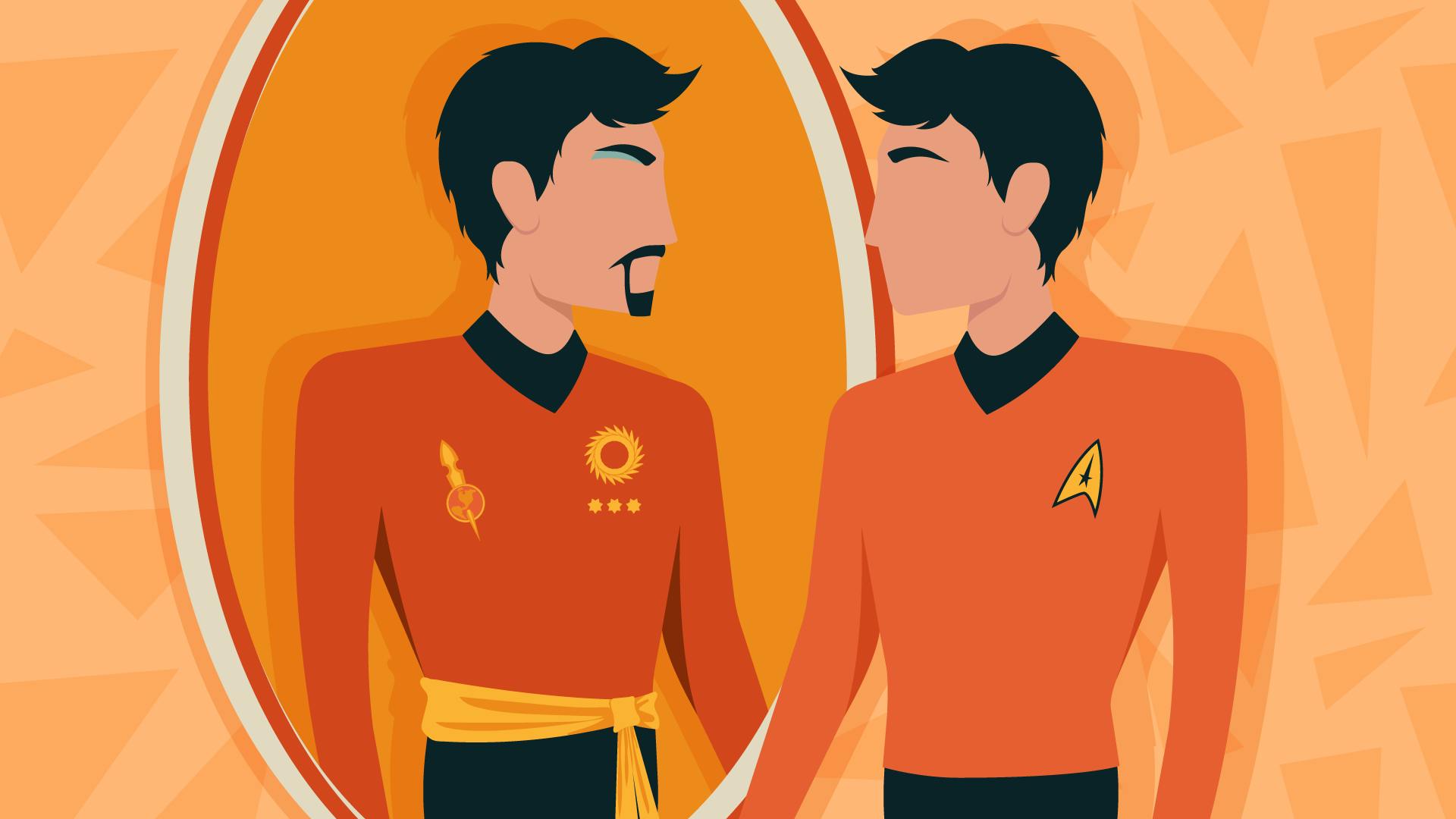
StarTrek.com
As we evolve, so do the stories we tell ourselves — and so do the monsters that lurk within them. Creatures like the vampires that crept into our imaginations hundreds of years ago may share a common ancestry with the ones we write about today, but they represent different dangers each time they reemerge in the zeitgeist. Heck, sometimes they even sparkle.
By comparison, half a century's worth of Star Trek mythology hardly registers a blip on the grand timeline of human history. But because those 53 years are so well preserved on film, it's easy to track how each iteration of the franchise shapes itself into a form that a new decade of viewers will recognize. And while there are no vampires in Star Trek lore (no, the Remans in don't count), there is an entire realm full of similarly alluring sadists who look like our heroes' lost loved ones, and who'd love nothing more than to seduce them all to the dark side.
It's got a pretty ironic name, too, when you think about it — the Mirror Universe.
More so than Klingons or Borg, or any other race that's fought the Federation, the people of the Mirror Universe are the closest thing Star Trek have to a consistent monster myth — partially because they've been around for so long, but mostly because their "evil" nature is the entire reason for their existence. They might be sympathetic as individuals and they've shown that they can adapt to cultural norms, but from their very first appearance, they were designed to scare us.
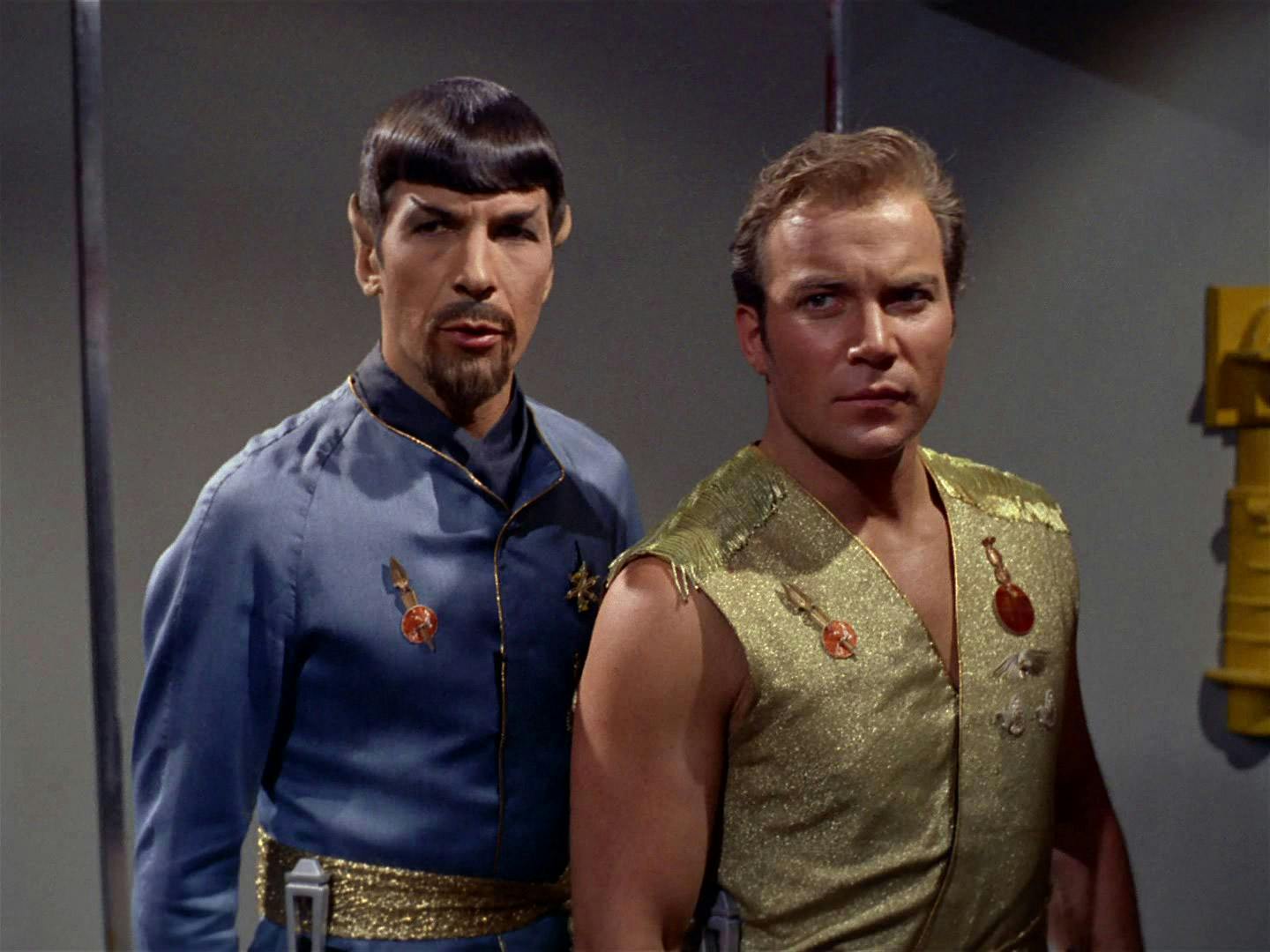
"Mirror, Mirror"
StarTrek.com
Episode: ""
As with so many now-iconic Star Trek conceits, the Mirror Universe started with a single one-off episode, in which transporter interference from an ionic storm spits Kirk, Uhura, Scotty, and McCoy out into a "parallel" universe from their own. In place of the United Federation of Planets, they find the Terran Empire, where mutinous, evil twins of their fellow crew members use the might of the to raze alien civilizations across the universe.
The Terrans are coded as foreign, threatening others from the moment the landing party emerges from the transporter. They wear gilded uniforms that fall somewhere between 19th Century Persian military outfits and Pirates of Penzance costumes in appearance. Add to that Spock's '60s counterculture goatee and the censor-baiting bikinis (television was a notoriously anti-belly button medium back then), and it would have been abundantly clear to a typical contemporary audience that the Mirror Universe was not a place for Good and Decent American Values.

"Mirror, Mirror"
StarTrek.com
Still, the easiest way to demonstrate a fictional society's cruelty is to treat its women poorly (Handmaid's Tale and Game of Thrones do this in spades), and the Mirror Universe delivers on that front, too. Uhura quickly finds herself fending off aggressive sexual advances from her coworkers, and Marlena Moreau, the most important crewwoman on the ship, derives her power from her position as "Captain's Woman" — in other words, from being Kirk's concubine. Classic Star Trek certainly had its blind spots when it came to gender, but the patriarchal structure of Terran society is clearly meant to be on a completely different level of overt terribleness in comparison.
Eventually the landing party finds a way home, and for good measure Kirk throws in a starkly logical plea that Mirror Spock peacefully reform the Empire to keep it from crumbling in a century’s time (although his suggestion that the Vulcan use a machine that can literally just make people disappear doesn’t quite match up with that whole peace notion). The crew returns to their Enterprise to learn that their counterparts didn't have much time to wreak havoc before everyone else figured out the mix-up. "It was far easier for you, as civilized men, to behave like barbarians, than it was for them as barbarians to behave like civilized men," offers the original Spock as an explanation.
Despite the imperialistic rhetoric Spock uses, the message is clear. These "brutal, savage, unprincipled, uncivilized, treacherous" people are just as human as we are, and their evil deeds aren't too far away from our own. Given that the '60s are still remembered for the systematic brutality endured by nonviolent Civil Rights protesters (and, later, antiwar protesters — the Dow Chemical riots happened just two weeks after "Mirror, Mirror" aired, in fact), this warning would have felt especially appropriate at the time.
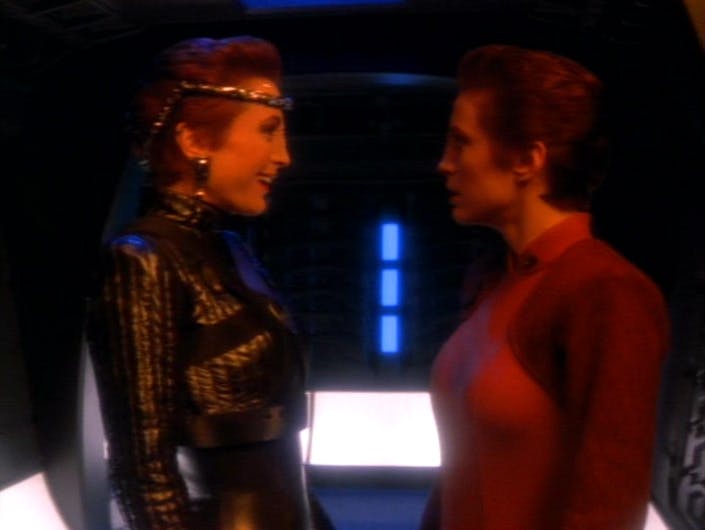
"Crossover"
StarTrek.com
Episodes: "," "," "," "," and ""
Although occasionally paid homage to fan-favorite episodes from The Original Series — "," for example, was a sequel to "," in which an infection among the crew causes them to behave hilariously out-of-character — the show never attempted its own version of the Mirror Universe. At a 2017 Star Trek Las Vegas panel, producer Brannon Braga explained, "We were a little frightened at doing it, and doing it badly, and maybe never really figured out what The Next Generation take would have been on it."
But , the red-headed stepchild of the Star Trek franchise (or, perhaps more accurately, the cool childless aunt who shows unexpectedly every six years and who you've always suspected might be in a long-term relationship with her "roommate"), was willing to take many more risks. Unlike The Next Generation, DS9 kept itself bound to one location, drawing on themes of war and interventionism that would have felt very familiar to globally minded citizens of the '90s. Honestly, if you replace the Cardassians with Russians, Bajor with Ukraine, and Starfleet with the United Nations trying to keep everybody in line, it wouldn't be that hard to transplant entire episodes of the series into the real world of post-Soviet politics.
Although DS9 didn't let its characters sail away from problems as easily as the crew of the Enterprise could, it did let them pop over to the Mirror Universe basically any time they wanted, returning five different occasions over seven seasons. However, each excursion became progressively less unsettling and more ridiculous; by the last visit in "," the Mirror Universe was used more for comic relief, in stark contrast to the densely serialized war narrative that encompassed the rest of DS9's final season.
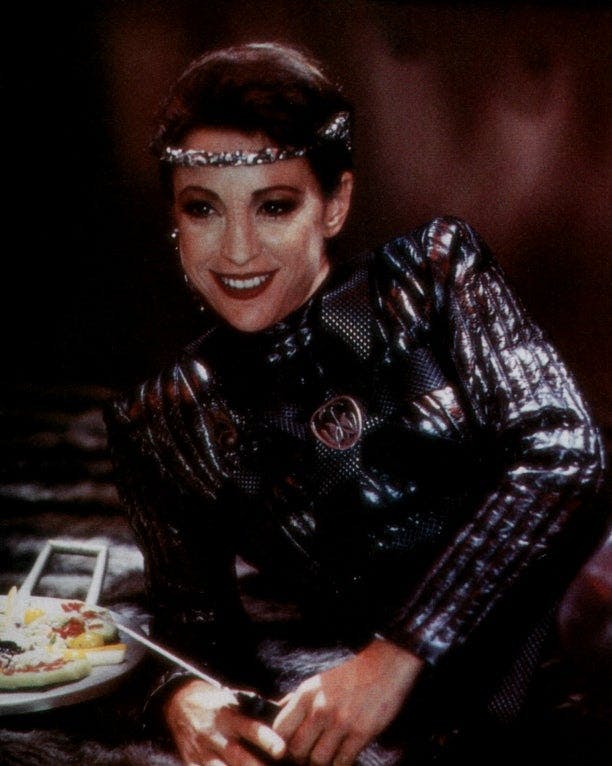
StarTrek.com
Which isn't to say that there's no interesting meat on the bones of this new mirror. For one thing, the Terrans of DS9 are no longer conquerors; having been conquered themselves when Spock's habilitated empire was defeated by the equally brutal Klingon-Cardassian Alliance. As such, the Terran lack of empathy manifests not just as cruelty, but as complacence; instead of promoting peace, our heroes nudge their parallel counterparts towards rebellion, transforming them into freedom fighters that band together against a powerful regime (If this is all starting to sound familiar, remember that Star Wars came after the original Trek series and changed pop culture pretty significantly in its wake).
There is one notable exception, of course — Intendant Kira Nerys, who rules Terok Nor with an iron fist, a chaotic sexual hedonism, and loads of manipulative, fake empathy for the Terran slaves she considers to be beneath her. Basically, she's what you'd get if you took recurring series baddie Gul Dukat and stuck him in Major Kira's body, right down to the uncomfortable obsession with "good" Kira. A solidly obvious example of the Depraved Bisexual trope (1992's Basic Instinct changed pop culture a lot, too), the Intendent may not have been Star Trek's first queer-coded villain, but she was certainly the most obvious. She was also, it should go without saying, unbelievably fun to watch, which is why she ended up in every single DS9 Mirror episode whether she was integral to the plot or not. Truly, Buffy the Vampire Slayer's Vampire version of Willow owes a lot to Intendant Kira's shining example.
Yet despite all the dystopian camp, these stories were just as invested in grief and trauma as the rest of DS9's sprawling narrative, primarily in the form of interactions between its protagonists (the Siskos and Major Kira, more specifically) and Mirrorverse doppelgängers of their dead loved ones (Sisko's wife and Jake's mother, Jennifer, and Kira's lover, Vedek Bareil). Much of Deep Space Nine revolves around how difficult and confusing it is to process loss in the midst a violently changing status quo – what better way to represent that than with living ghosts who don't act like "themselves" anymore?

"In a Mirror, Darkly, Part II"
StarTrek.com
Episodes: ""
If Deep Space Nine smoothed the Mirror Universe into a swashbuckling field trip, brought it screaming back to its dark authoritarian roots (literally, in the case of Mirror Archer's pitch-black crew cut). Although Enterprise is sometimes overlooked as a prequel series, it does a wonderful job of taking the familiar trappings of TOS and contextualizing them more deeply – and often, more interestingly. I could, in fact, spend the rest of this article writing about how deeply devoted I am to Enterprise's interpretation of the Andorians and how much I yearn for Discovery to follow in its badass baby-blue footsteps, but that's not really relevant to the issue at hand.
What is relevant is how Enterprise breaks unexpected ground via a two-part story arc that takes place entirely in the Mirror Universe, without any Federation characters to serve as our audience surrogate. The intro opens on recycled footage of humanity's fateful first encounter with Vulcans – and then not only devolves into chaos as the humans open fire, but then launches into a completely reimagined opening title sequence that juxtaposes ominous march music with war footage and Nazi airplanes. "Faith of the Heart," this isn't.
In some ways, the pre-Kirk Terran Empire confines itself to many of the parameters that TOS set for the Mirror Universe. There are bare midriffs again, made even more hellish this time around by the mid '00s trend of low rise pants (On a related note, you can't convince me that Mirror T'Pol's hair, with its center-parted bangs and pin-straight length, wasn't a deliberate jab at the style choices of several contemporaneous pop stars). Hoshi Sato serves as the Captain's Woman for two different male authority figures — that is, right up until she kills the last man standing in her way and declares herself Empress. Enterprise was definitely on a "women using sex for power" kick around that time; the previous episode in the season, "," reinvents the as active partners in a conspiracy to ensnare the men of other species with their .
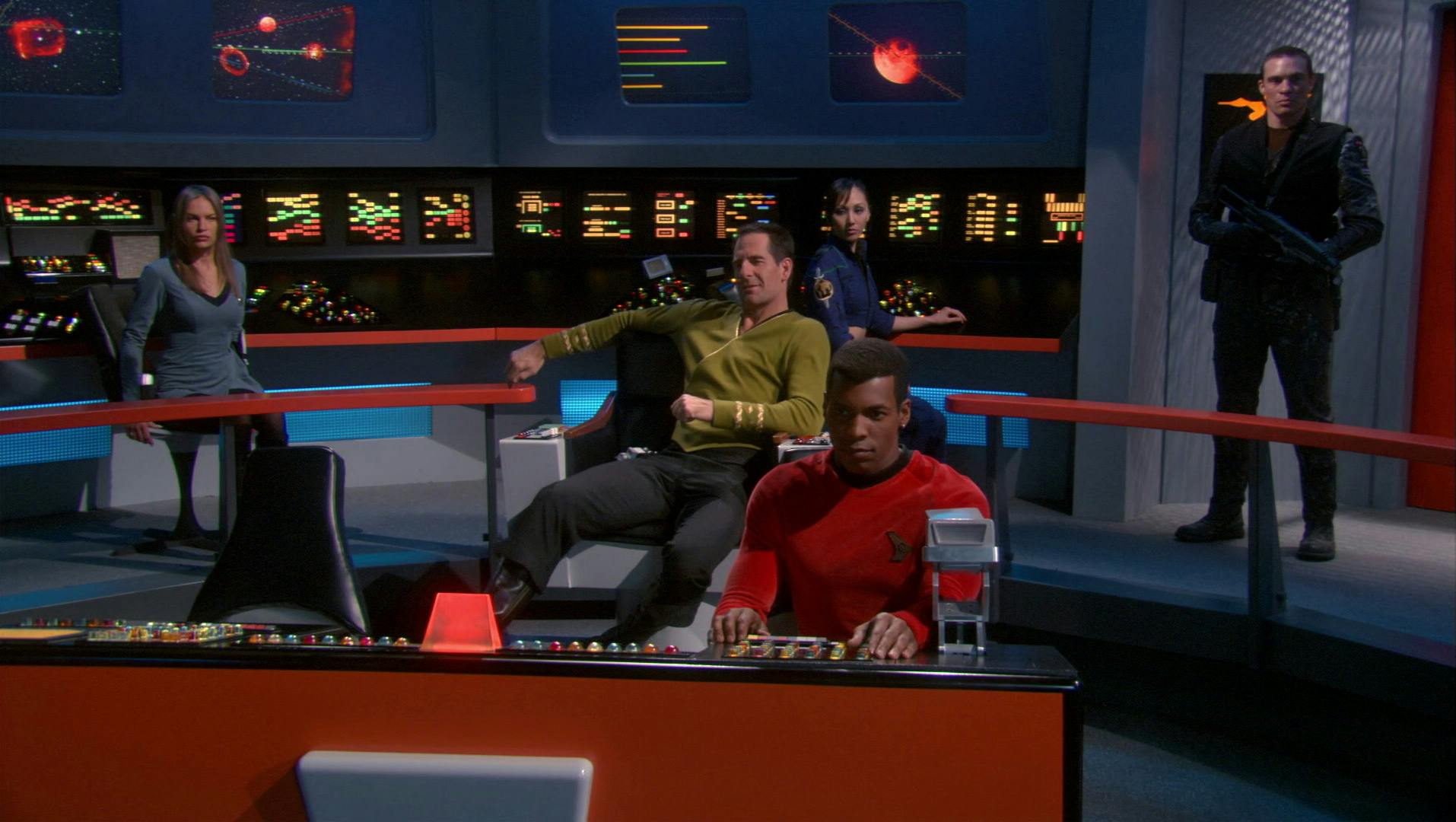
"In a Mirror, Darkly, Part II"
StarTrek.com
Hoshi's ascension is just the twist ending, though. As is the case of pretty much every show on television during George W. Bush's presidency, the true villain here is a torture-happy military rising to power on the backs of a marginalized population — this time the Vulcans and other non-Terrans. And Mirror Archer, too, is haunted; not by the dead, but by his own ambition, as an apparition in the form of his newly discovered double (Thanks to some dimension-hopping time shenanigans, post-Federation records from the original U.S.S. Defiant end up in the Empire's possession), egging him on with his far superior personal accomplishments like the Gallant to Mirror Archer’s Jingoistic Goofus.
By this time, Enterprise had completely reoriented itself around a post-9/11 narrative, ending its second season with a terrorist attack against Earth and continuing with the Enterprise's efforts to reach the far-off civilization responsible for it.
"In a Mirror, Darkly," then, represents a stark examination of America's more reprehensible actions during that time — and lands much better than previous Mirror Universe episodes as a result.
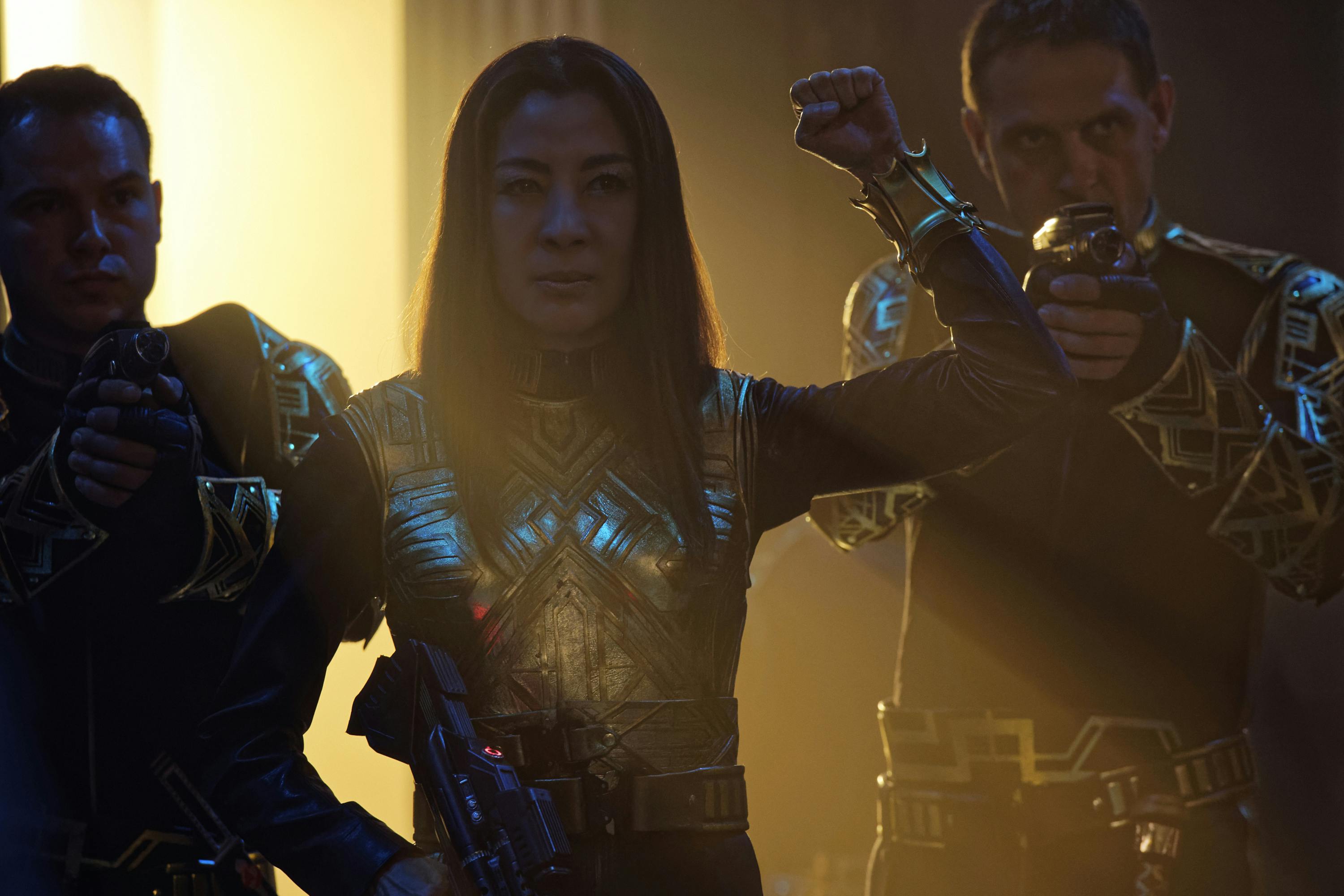
"What's Past is Prologue"
StarTrek.com
Episodes: "Despite Yourself," "The Wolf Inside," "Vaulting Ambition," and "What's Past Is Prologue"
Since will return for a third season, there's no telling how the Mirror Universe might continue to evolve in future episodes. So far, however, it succeeds at combining some of the best tropes of past Terran encounters — elaborate gold medals, super straight haircuts, Starfleet operatives pretending to be their own evil selves, Vulcan rebels with imposing beards, and twice the fun from the new Philippa Georgiou, who's both an imposing female Emperor (Hoshi walked so she could run, y'all) and a returning dead character whose presence thoroughly freaks out our protagonist.
Best of all, the show hasn't yet fallen back on over-the-top gender stereotypes or explicitly revealing costuming to get its villainy across — they eat poor defenseless Kelpiens instead. We do eventually learn from Mirror Georgiou that everybody in her world is pansexual, however, herself included (and let's all admit to ourselves that some of us would have been a little disappointed if she weren't).
Beyond all the clever nods to continuity, Discovery also returns to an important truth inherent to the Terran Empire — it is the end point to a slippery slope of bad decisions that our contemporary 2019 society could be making at this very moment. That's why Captain Lorca is such a compelling villain in the first place. His ruthless methods seem understandable, maybe even relatable, in the face of overwhelming threats to the Starfleet way of life — that is, until we realize just how many lines our heroes have crossed along the way. Not to mention that the sight of a fearsome, fascist demagogue attempting to crush a minority resistance feels especially apt in today's political climate.
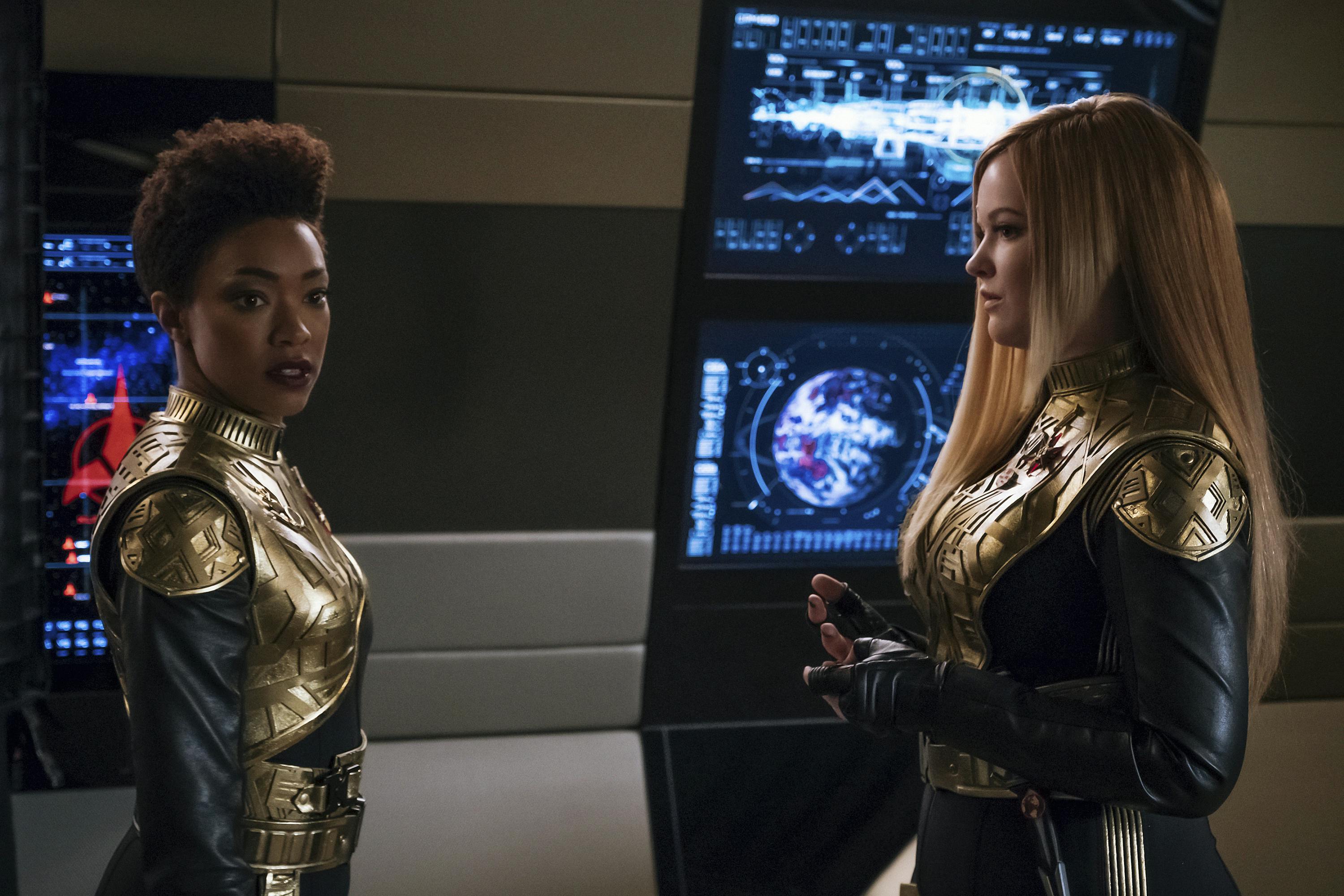
"Despite Yourself"
StarTrek.com
"When we were in the Terran universe, I was reminded how much a person is shaped by their environment," Ensign Tilly says after their escape, to drive the point home. "And I think the only way that we can stop ourselves from becoming them is to understand the darkness within us, and fight it."
Unless something drastic changes in the timeline after the 24th Century, the Mirror Universe is always going to function as an "evil" shadow of the one where Star Trek spends most of its time. But it's also served as a cautionary tale for the show's progressively minded fanbase — one that constantly needs to be reexamined in relation to our own surroundings. After all, if we don't understand our own darkness, how else can we learn to combat it, pushing it down into submission in order to achieve that diverse, equal, post-scarcity future utopia we deserve?





